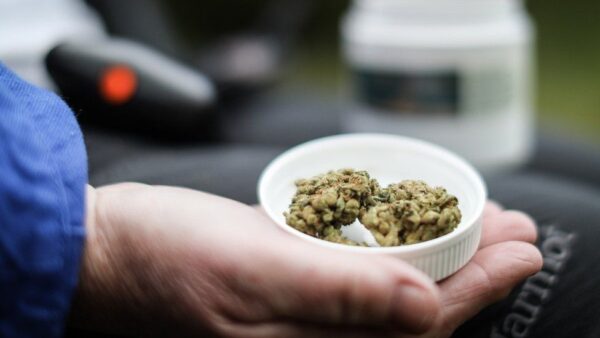Since the UK government announced the rescheduling of cannabis on 1st November 2018, specialist clinicians have been permitted to prescribe cannabis-based medicinal products (CBMPs) for a wide range of conditions. At least two frontline conventional therapies must first have been tried before medical cannabis may be considered. Nonetheless, thanks to this landmark regulatory change, a growing number of eligible patients in the UK are now able to access CBMPs for various conditions.
Chronic pain has a high prevalence around the world, with estimations suggesting that over a third of people in the UK alone may be affected. What’s more, around 12% of chronic pain patients are consequently unable to perform daily activities. Despite this high prevalence, effective treatment options remain limited with inconsistent evidence of efficacy and safety.
Chronic pain can affect people of any age and, while it is primarily characterised by the presence of persistent pain, co-morbid conditions are common. Anxiety is among the most common conditions co-occurring alongside chronic pain, with those with chronic neck and back pain most affected. Effective treatment options for improving symptoms of chronic pain and co-morbid anxiety are therefore an important area of research to provide sufficient relief for patients.
While clinical evidence of both CBD and THC’s anxiolytic potential remains underdeveloped, the role of the endocannabinoid system (ECS) in mood regulation makes it a potential target of interest. Furthermore, the ECS has also been found to play an important role in pain signalling.
To better understand these connections, the authors of a recent observational study assessed the treatment outcomes in chronic pain patients both with and without co-morbid anxiety enrolled in the UK Medical Cannabis Registry.
Design and Method of the Study
An assessment of treatment outcomes of chronic pain patients was completed using data from the UK Medical Cannabis Registry (UKMCR). The UKMCR, which was set up by Sapphire Medical Clinics in 2019, is the first UK patient registry to collect data regarding cannabis-based medicinal product (CBMP) prescription formulations, patient demographics, patient-reported outcome measures (PROMs) and adverse events (AEs). Previous data from the UKMCR demonstrated associations with improvements in pain in chronic pain patients and anxiety in patients with generalised anxiety disorder (GAD).
The primary outcome of this study was to compare pain-specific changes to patient-reported outcome measures (PROMs) from baseline to follow-up between chronic pain patients with and without anxiety. Secondary outcomes included general health-related quality of life (HRQoL) PROMs, AE incidence, and changes to oral morphine equivalent between cohorts.
Pain was measured using the brief pain inventory short-form (BPI), short-form McGill pain questionnaire (SF-MPQ), and pain-specific visual analog scale (VAS-pain). HRQoL was measured across five domains (mobility, self-care, usual activity, pain/discomfort, anxiety/depression) of the EQ-5D-5L, the GAD-7 (a numerical rating scale used to assess the severity of Generalised Anxiety Disorder), the single-time sleep quality scale (SQS) NRS, and the PGIC – a 7-point scale used to ascertain participants’ perception of change following treatment.
Results of the Study
A total of 1,254 patients were included in the final analysis: 711 (56.7%) with and 543 (43.3%) without anxiety at baseline. The anxiety cohort consisted of participants with mild (n = 322; 25.7%), moderate (n = 201; 16.0%), and severe (n = 188; 15.0%) anxiety. There were no differences in comorbidity incidence between the two cohorts besides depression/anxiety and leukaemia.
Most participants in both the no anxiety (n = 442; 85.5%) and anxiety (n = 568; 86.7%) cohort were prescribed both CBD and THC. A total of 1,018 participants (no anxiety: n = 444; anxiety: n = 574) were included in PROMs analysis, as 236 participants did not complete any follow-up PROMs.
Treatment Outcomes
The data analysis revealed that there was an overall improvement in all pain-specific PROMs in both patient cohorts (with and without anxiety). Improvements were also seen in all HRQoL PROMs in the anxiety cohort and almost all HRQoL PROMs in the no anxiety cohort. The researchers suggest that patients with co-morbid anxiety may achieve greater overall pain improvements due to “concomitant improvements in central sensitization and pain catastrophizing, which are more prevalent in those with anxiety cohorts.”
Overall, chronic pain patients with co-morbid anxiety achieved greater improvements in anxiety, sleep, and HRQoL at 1, 3, and 6 months compared to patients without anxiety. Chronic pain patients with co-morbid anxiety experienced greater improvements in HRQoL than those without co-morbid anxiety, with the exception of the EQ-5D-5L mobility and self-care scores and the pain-specific PROMs.
Furthermore, patients across both cohorts also observed reductions in opioid consumption and there was no difference in the proportion of patients in each cohort experiencing an adverse event. Ninety-one participants in the no anxiety and 138 participants in the anxiety cohort reported at least one adverse event (AE). The most common AEs were fatigue, somnolence, and dry mouth. In both cohorts, over 80% of AEs were mild or moderate in severity.
Conclusions
The researchers concluded that these results demonstrate that among those patients enrolled on the UK Medical Cannabis Registry with chronic pain, those with co-morbid anxiety had greater improvements in their general health-related quality of life in comparison. There was also a trend towards them having improved pain outcomes, but these were not consistently observed.
However, the authors also acknowledge some limitations of this study. It is recommended that future research in this area aim to “stratify outcomes based on chronic pain aetiology and severity, anxiety disorder type and cannabis formulation and administration route.”









